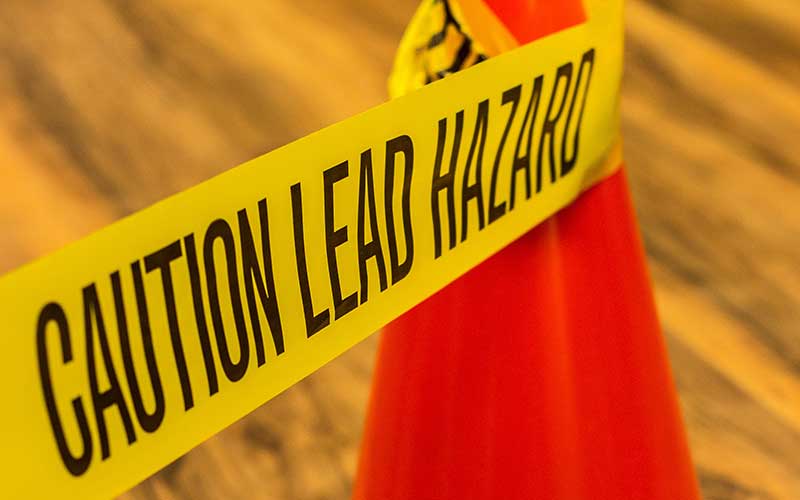
When discussing the tragedy of childhood lead poisoning, I’m often met with the incredulous response “Haven’t we already solved that problem?”
It’s a fair question. After all, we’ve known that lead is a dangerous toxin, especially for kids, for decades – even long before the federal government banned lead from paint in 1978 and from gasoline in 1990 amendments to the Clean Air Act.
But unfortunately, the answer to the question is still, “Not yet.”
Lead Poisoning is a Persistent – and Preventable – Health Risk
It’s estimated that 535,000 preschool-age children across the United States have blood lead levels warranting medical management. Why is lead still such a problem? Because although it is no longer present in the paints we use and the gasoline that fuels our cars and trucks, its presence remains ubiquitous.
Here in New Hampshire, for example, we have the oldest housing stock in the nation. That means too many families have to live in aging properties with doors, window frames, and other surfaces laced with lead-based paint. Through the normal wear-and-tear of everyday living, these surfaces create lead hazards in the visible forms of chipping, peeling, and flaking paint. Even more often, those hazards are in the invisible form of lead dust. In addition to lead-based paint, of course, the crisis in Flint, Michigan, gave broad public exposure to the danger that lead can also pose in our drinking water.
Any Amount of Lead Exposure is Dangerous – and the Impacts Can Last a Lifetime
Regardless of how children are exposed to lead, the consequences are tragic. Even low levels of lead exposure interfere with brain development in ways that can be permanent and irreversible, effectively robbing kids of their full potential. Long-term health problems range from learning disabilities, attention deficit disorders, and cognitive impairment, to diminished impulse control. And because low-income populations are disproportionately exposed to lead hazards in substandard housing, lead poisoning is yet another barrier to people escaping poverty.
While the tragedy of childhood lead poisoning is not yet a thing of the past, fortunately, progress is being made.
Federal and State Progress is Promising
At the federal level, last January the Department of Housing & Urban Development adopted a much more stringent standard for triggering protections for children residing in HUD-owned or HUD-assisted housing who have been exposed to lead. Protective actions were previously required when a child was diagnosed with a blood lead level of 20 micrograms per deciliter. Now actions are triggered at the Centers for Disease Control’s (CDC’s) much more protective level of 5 micrograms per deciliter.
Through the bi-partisan Lead-Safe Housing for Kids Act of 2017 (S. 1845), Congress is considering even stronger protections for children residing in housing units owned or supported by HUD – protections designed to prevent kids from becoming poisoned in the first place. Considering that HUD owns or funds an estimated 57,000 units with active lead hazards, and an estimated 450,000 units occupied by children and built before the 1978 ban on lead-based paint, these are critically important actions.
We’re also seeing progress on the state level. Maine recently adopted legislation requiring protective actions in any rental property where a child is found to have a blood lead level of 5 micrograms per deciliter (the CDC’s current recommendation). And in New Hampshire, on the heels of numerous reforms recommended by the Childhood Lead Poisoning Prevention & Screening Commission on which CLF sits, the legislature is actively considering measures to increase the number of kids tested for lead poisoning, and to better protect kids from lead exposures (via lead-based paint, and drinking water) in rental properties, childcare centers, and schools.
Learn More: Join Us for a Live Teleconference on October 25
While we at CLF continue to advocate stronger protections at the state and federal levels, we also are working to increase public awareness about the hazards of childhood lead poisoning and how best to protect our kids. That’s why we’ve teamed up with partners to create www.leadfreekidsnh.org – an accessible resource to better inform parents and caregivers about lead and to engage people in our efforts for more protective laws.
It’s also why, during this year’s National Lead Poisoning Prevention Week, we’ll be hosting a live, online teleconference with local experts to discuss childhood lead poisoning and needed solutions. The discussion will take place on October 25 at noon. We invite you to join us and to sign up here.
And should you have any questions about childhood lead poisoning and ways you can learn more or help, feel free to contact me at tirwin@clf.org.



